Another trip to Kwazulu Natal, saw us going south to see the Red Desert, the Mpenjati Nature Reserve and the Oribi Gorge.
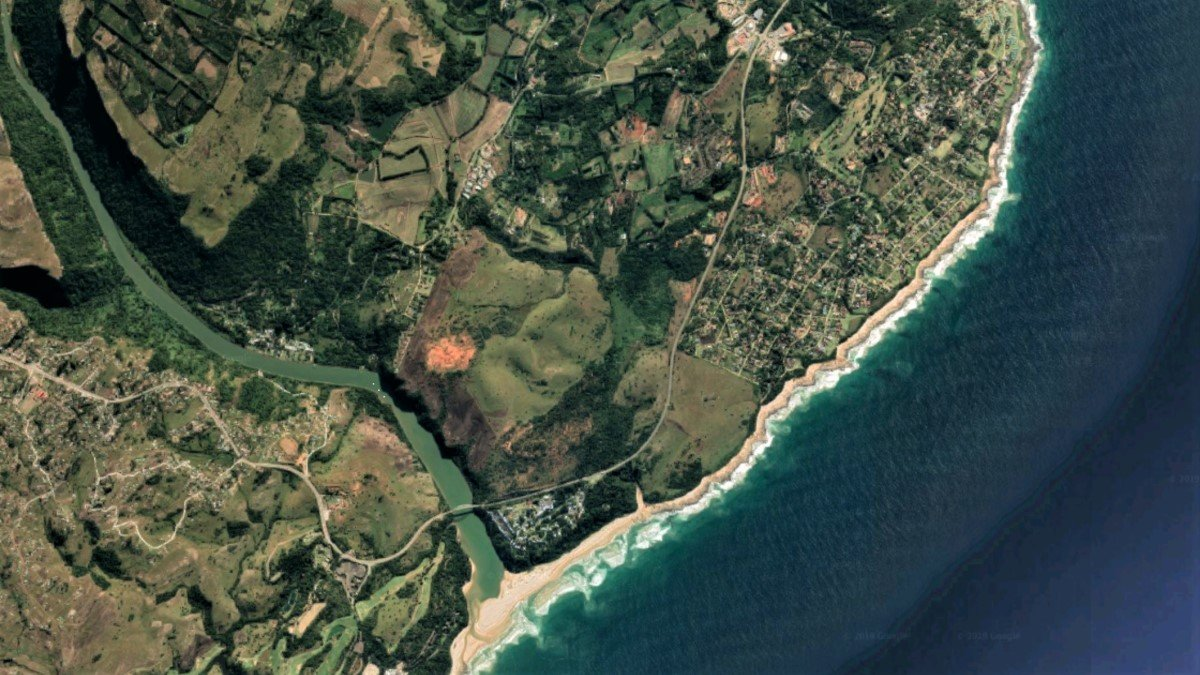
Day 1
A drive of just under 2 hours brought us to Port Edward, location of the iconic Red Desert: the world’s smallest desert. This little desert lies just west of the town and measures a mere 11 hectares in its entirety and is just a red dot on the map. As a result of serious overgrazing and subsequent erosion, the bare red soil contrasts starkly with the surrounding lush and tropical vegetation. Due to the marine deposits and archaeological artefacts going back millions of years, this is now declared an internationally protected heritage site. The mineral deposits give it it’s iconic red colour.
(top left image courtesy Google Maps, top right image courtesy Red Desert Nature Reserve)
The wind was howling and nearly blew us off our feet. It was a rainy, windy and outright miserable day and exploring the walking and hiking trails to overlook the river and estuary was not an option.
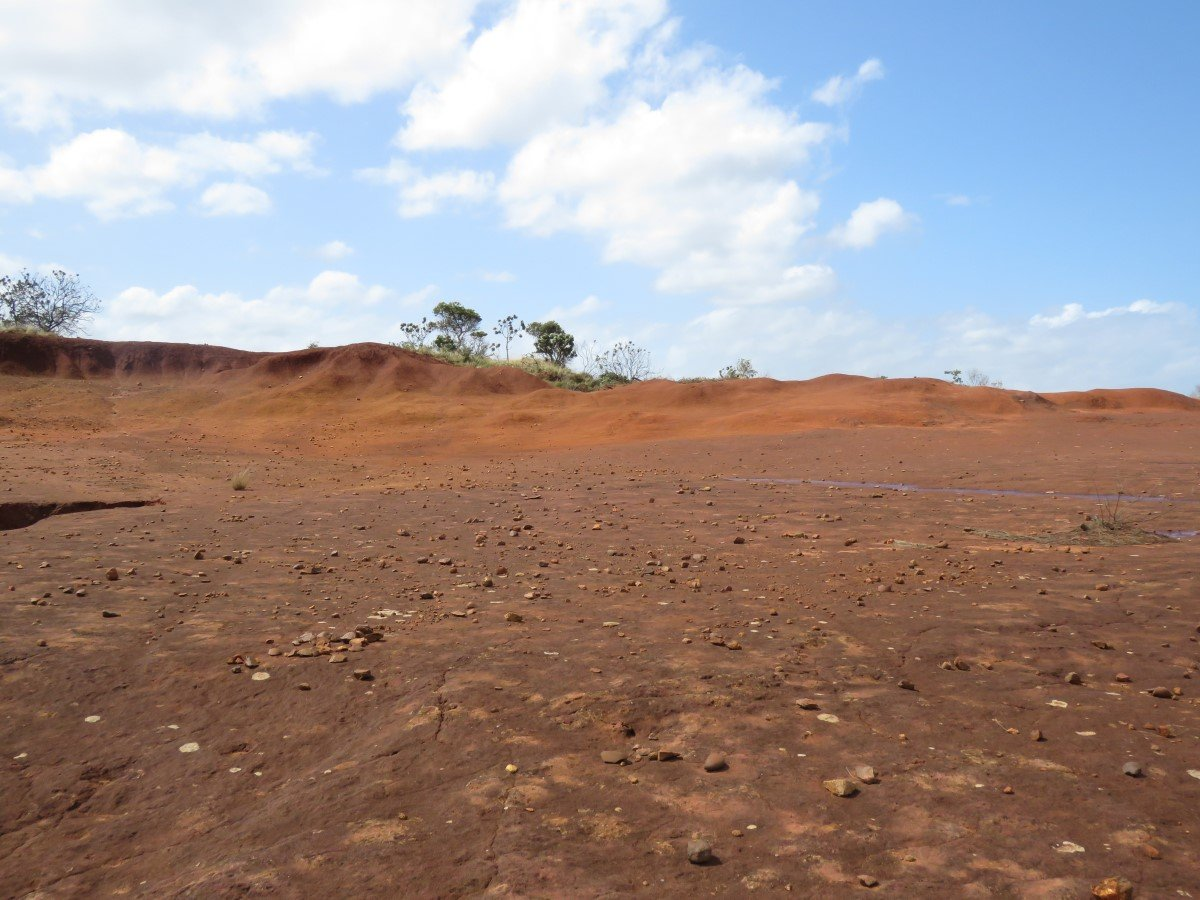
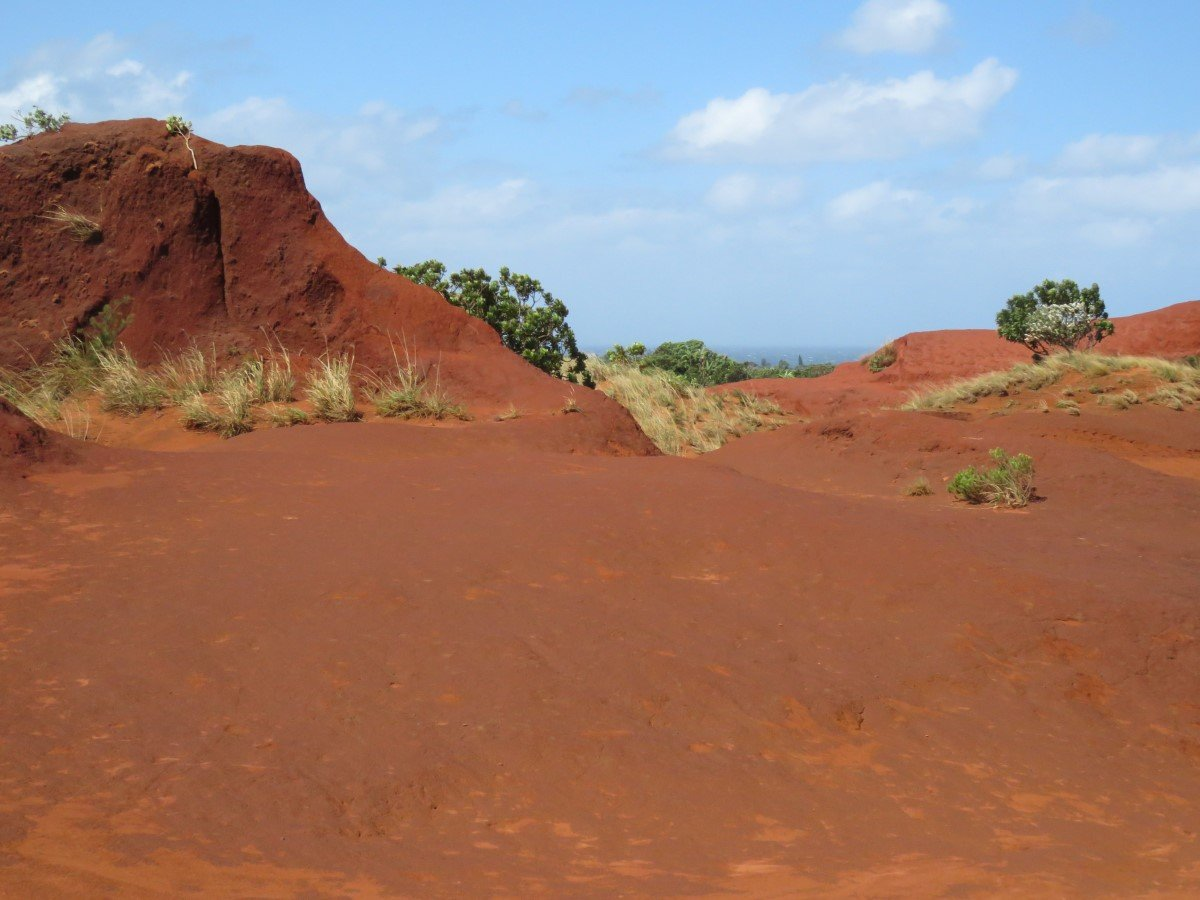
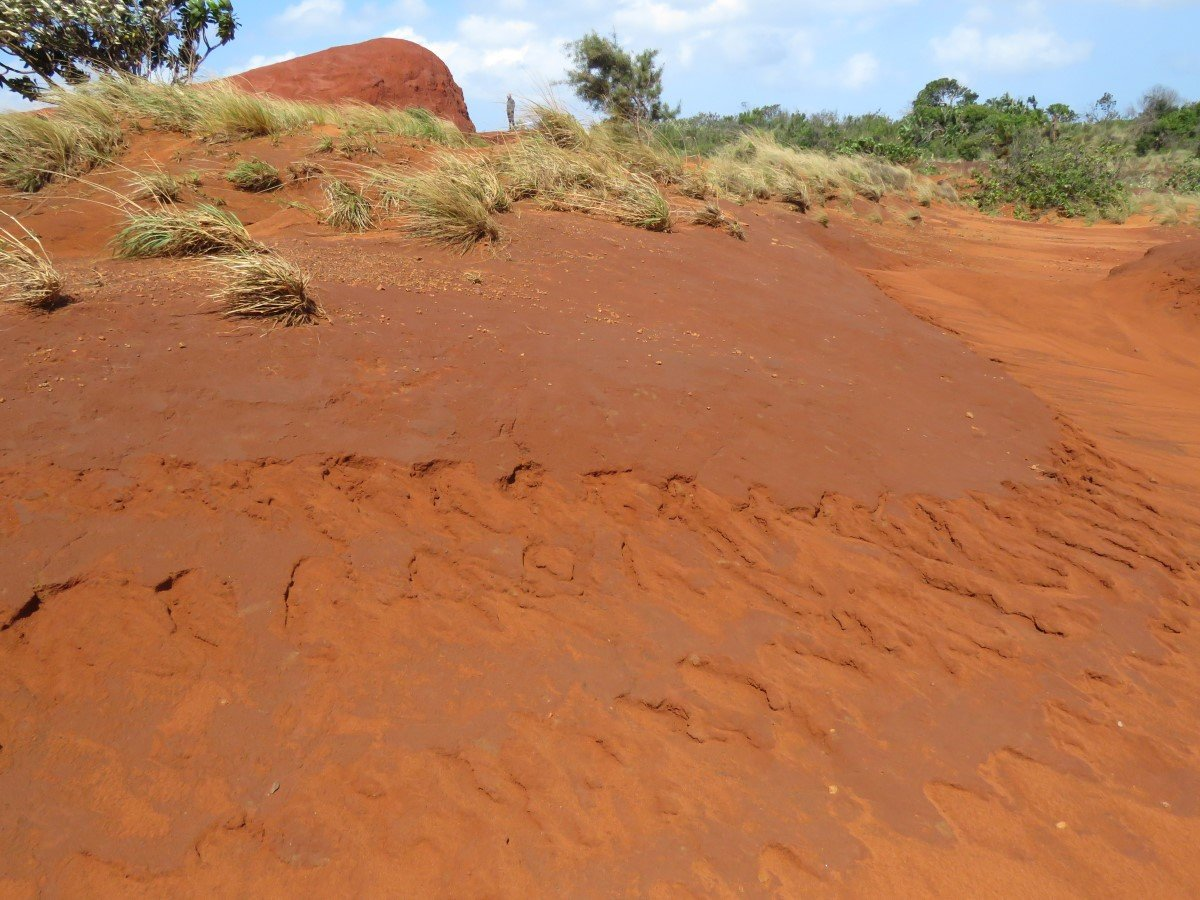
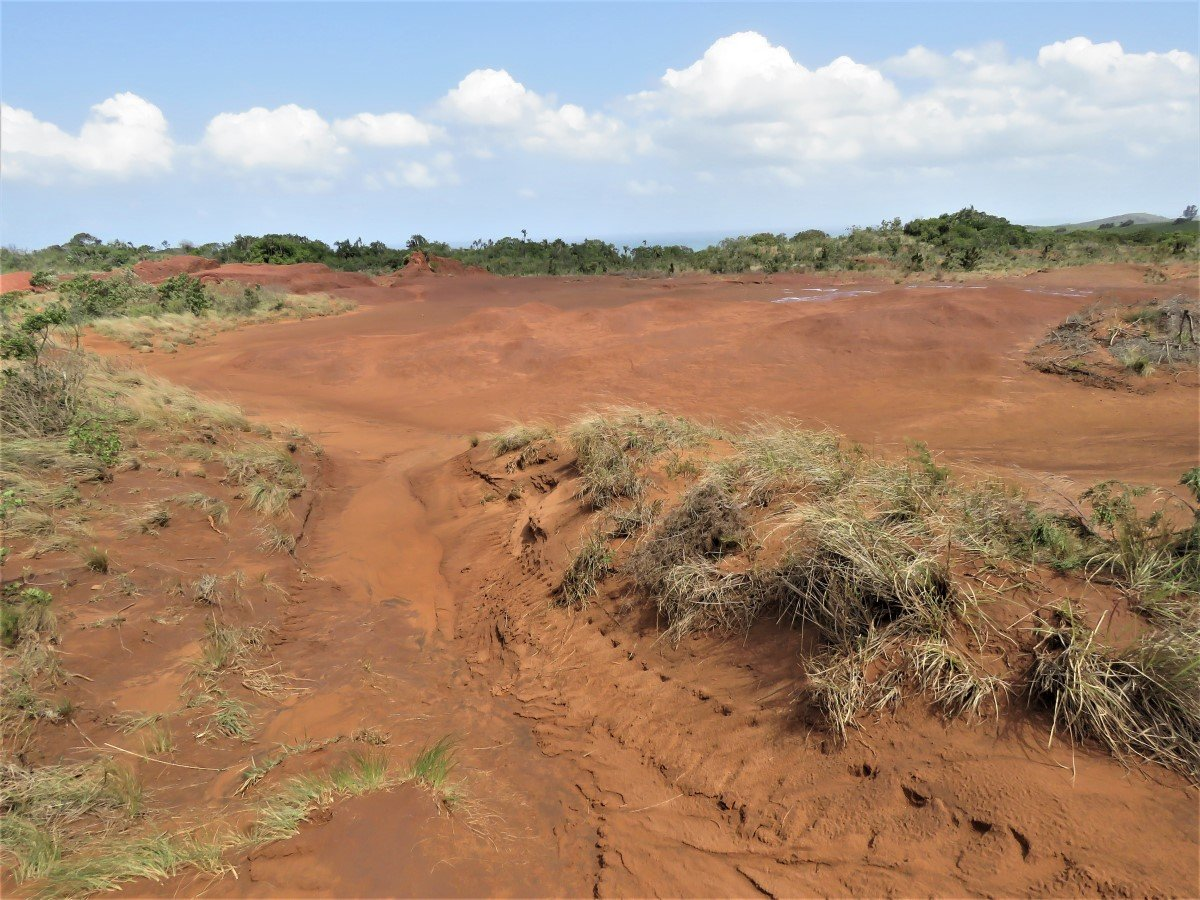
After almost blowing away in the Red Desert, we made a stop at the Beaver Creek Coffee Estate for a welcome steaming cup of “boeretroos”. Although the weather was still miserable and we couldn’t tour the estate lands, we had an entertaining in-house tour and opportunity to relax and drink freshly brewed coffee from the estate.
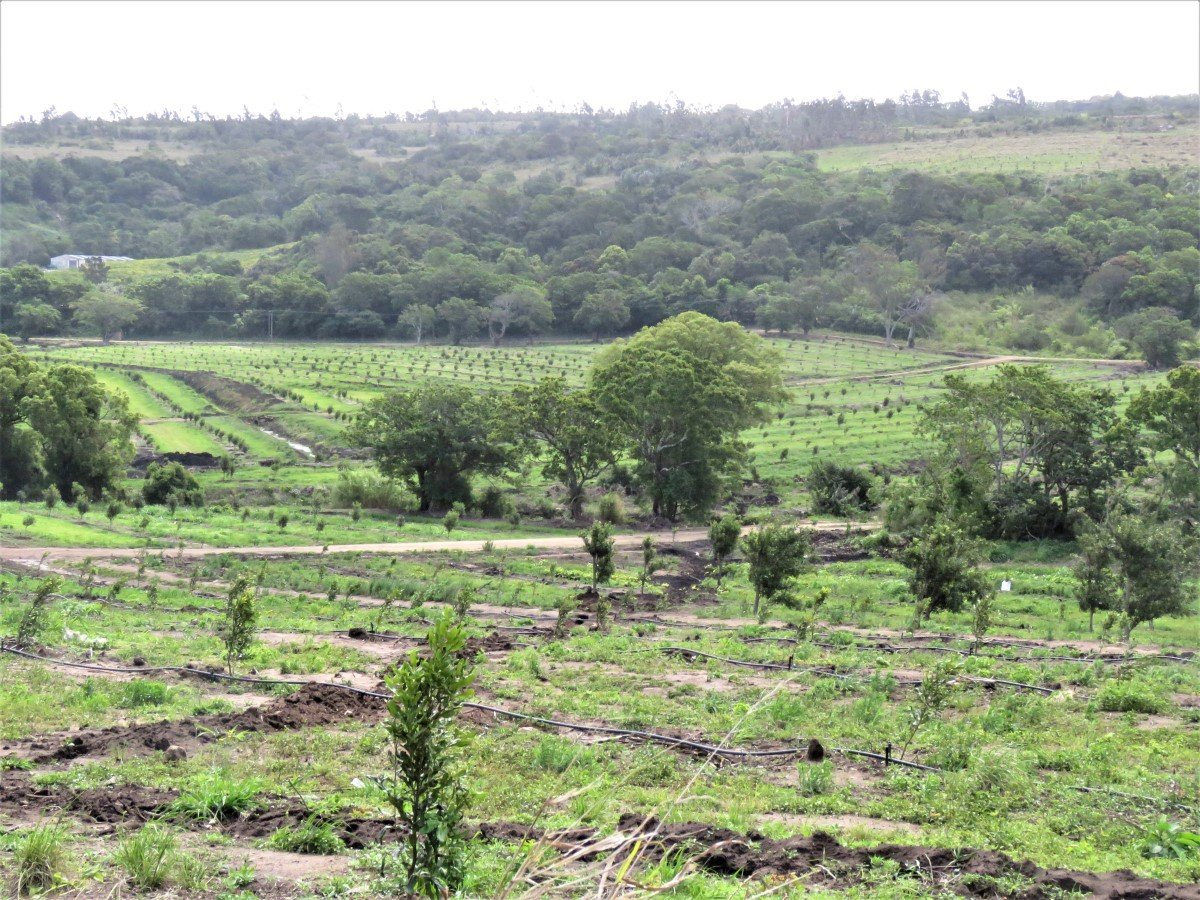
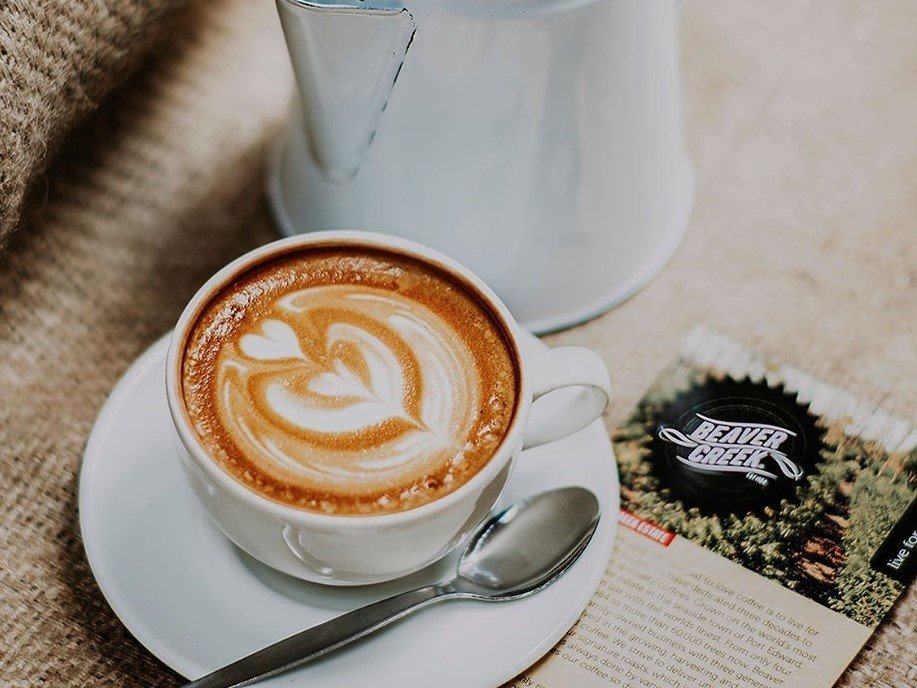
Driving back towards an overnight stop at Oslo Beach, we made a detour to the Mpenjati Nature reserve – a coastal reserve bordering the Trafalgar Marine Protected Area. As said before, it was a very windy day and we felt its full force on the beach.
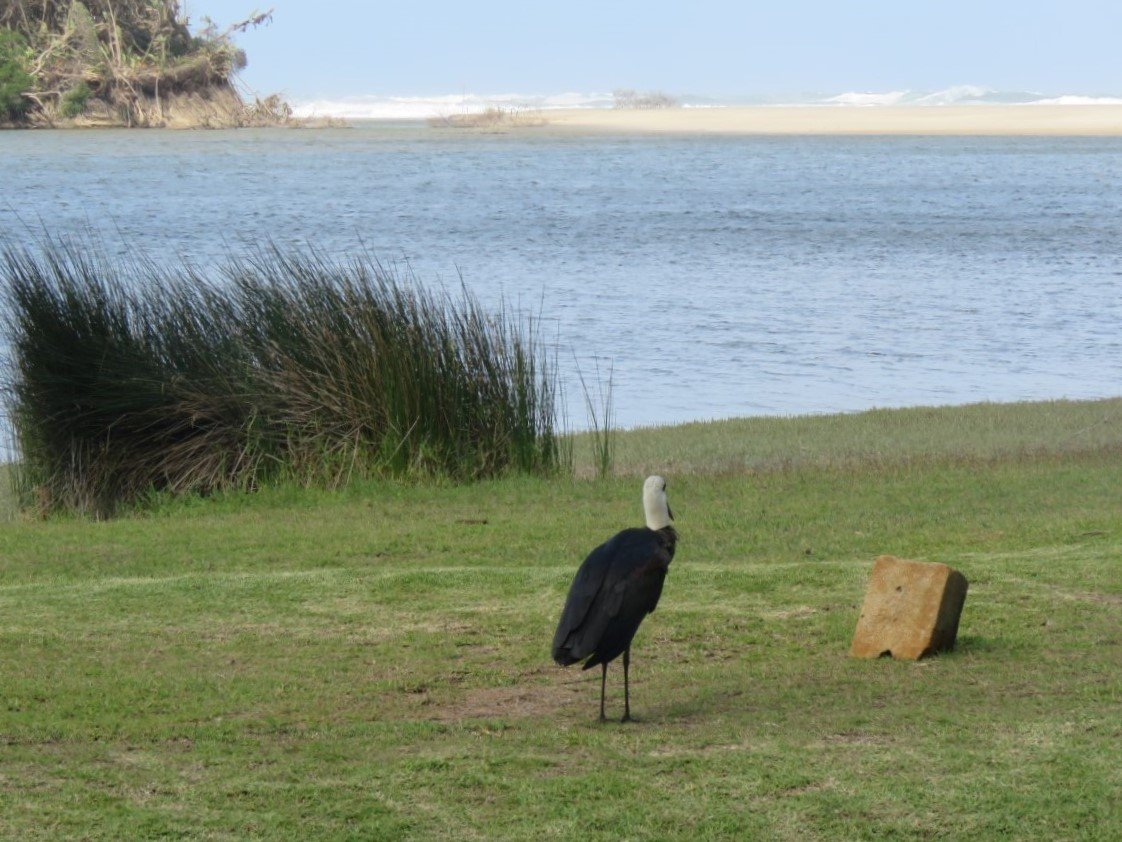
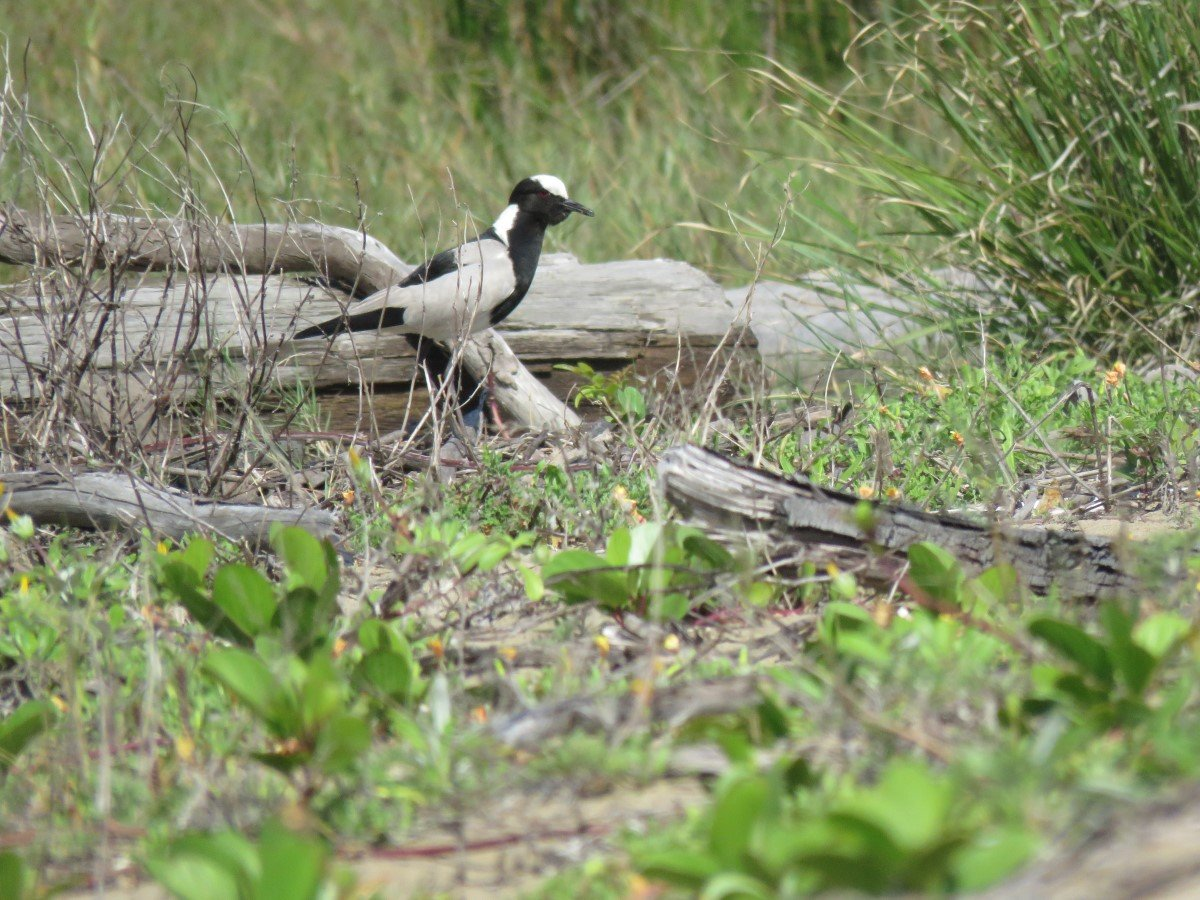
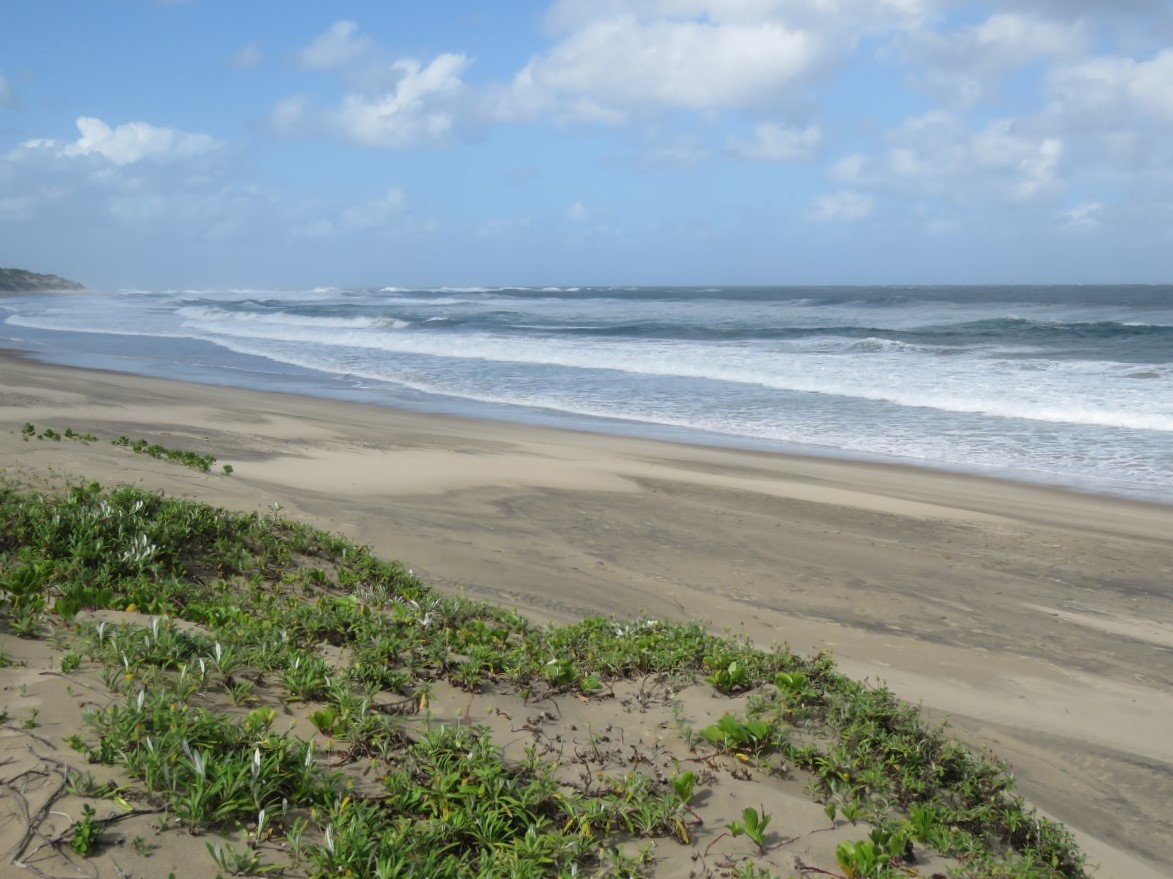
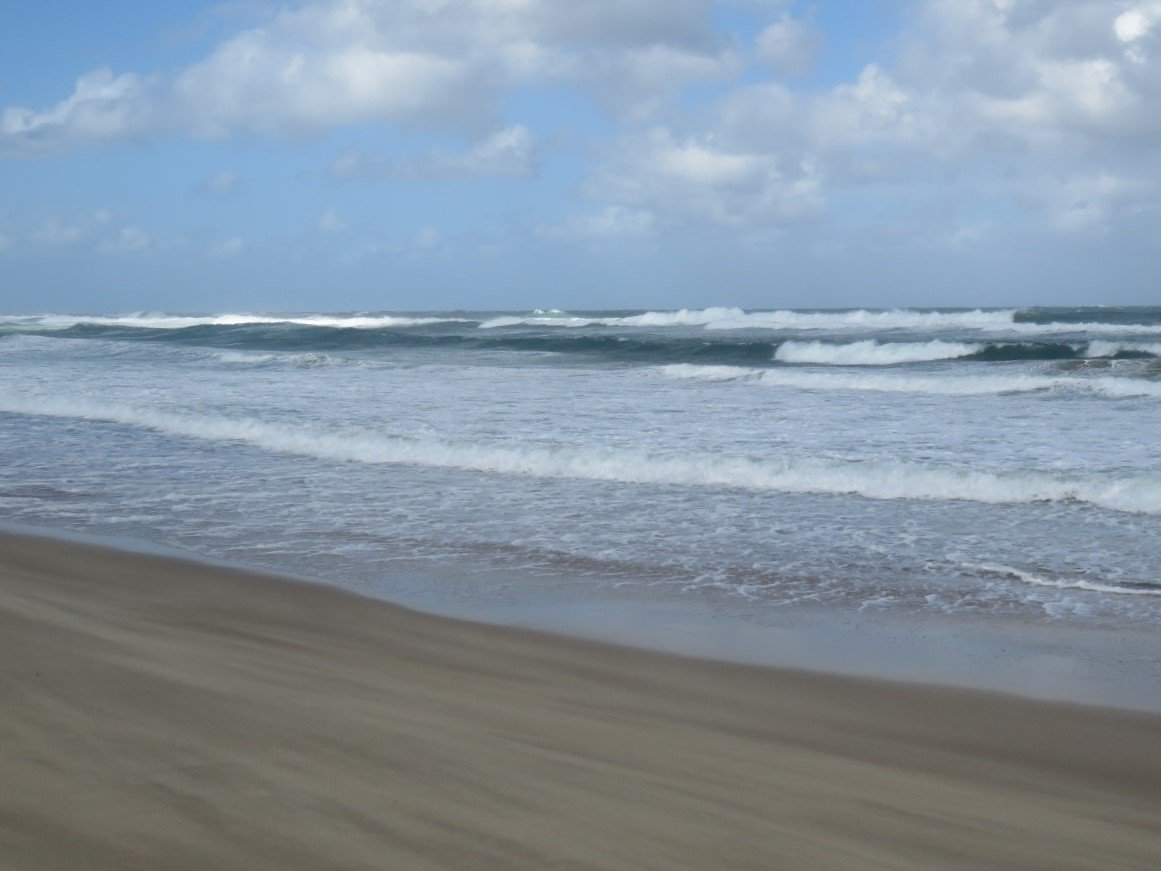
The wind was so strong we could lie back and be supported by the wind without falling. Face in the wind, we had to force one step in front of the other for a very short walk on the beach.
The wind was stinging our face and chilling us to the bone. The ocean beat relentlessly on the beach and the sand was a tapestry of swirls and patterns created by the collaboration of sand, ocean, wind and sea life caught in their force.
Day 2
After a nice lay-in on Sunday morning we hit the road towards Oribi Gorge. Oribi Gorge – cut by the Mzimkulwana river – is the eastern gorge of two gorges that cut through the Oribi Flats – the flat sugarcane farmlands of KwaZulu-Natal. The western gorge is formed by the Mzimkulu river.
Oribi Gorge is approximately 400 m deep and erosion has carved out about 30 km of kloofs and crags covered with sub tropical vegetation. It was built by Italian prisoners of war.
Besides a variety of small animals, there’s supposed to be serious leguaans in the kloof, but we only saw a small one that disappeared as soon as it lay eyes on us. My camera was not fast enough to capture him before he slithered down the rocks.
Oribi Gorge derives its name from the Oribi – a small antelope that lives in the gorge.
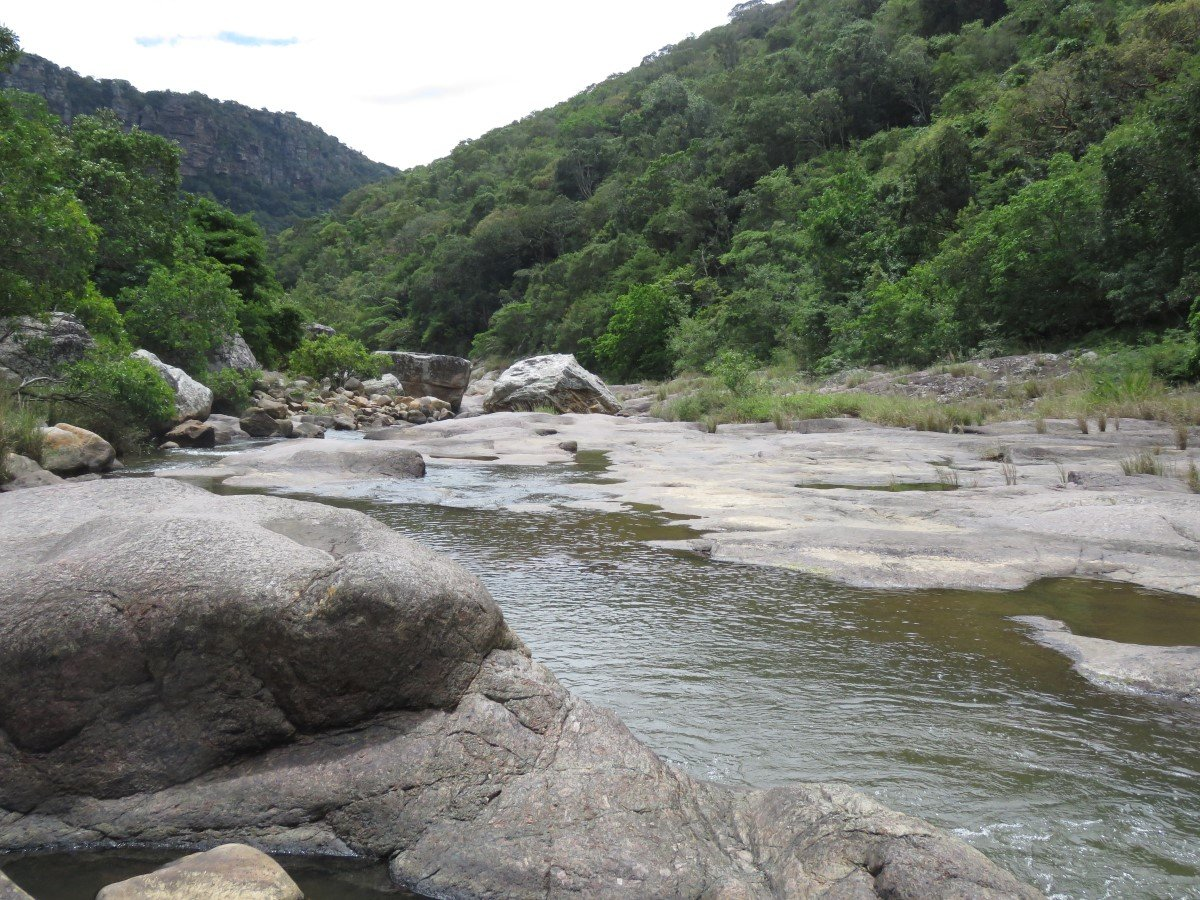
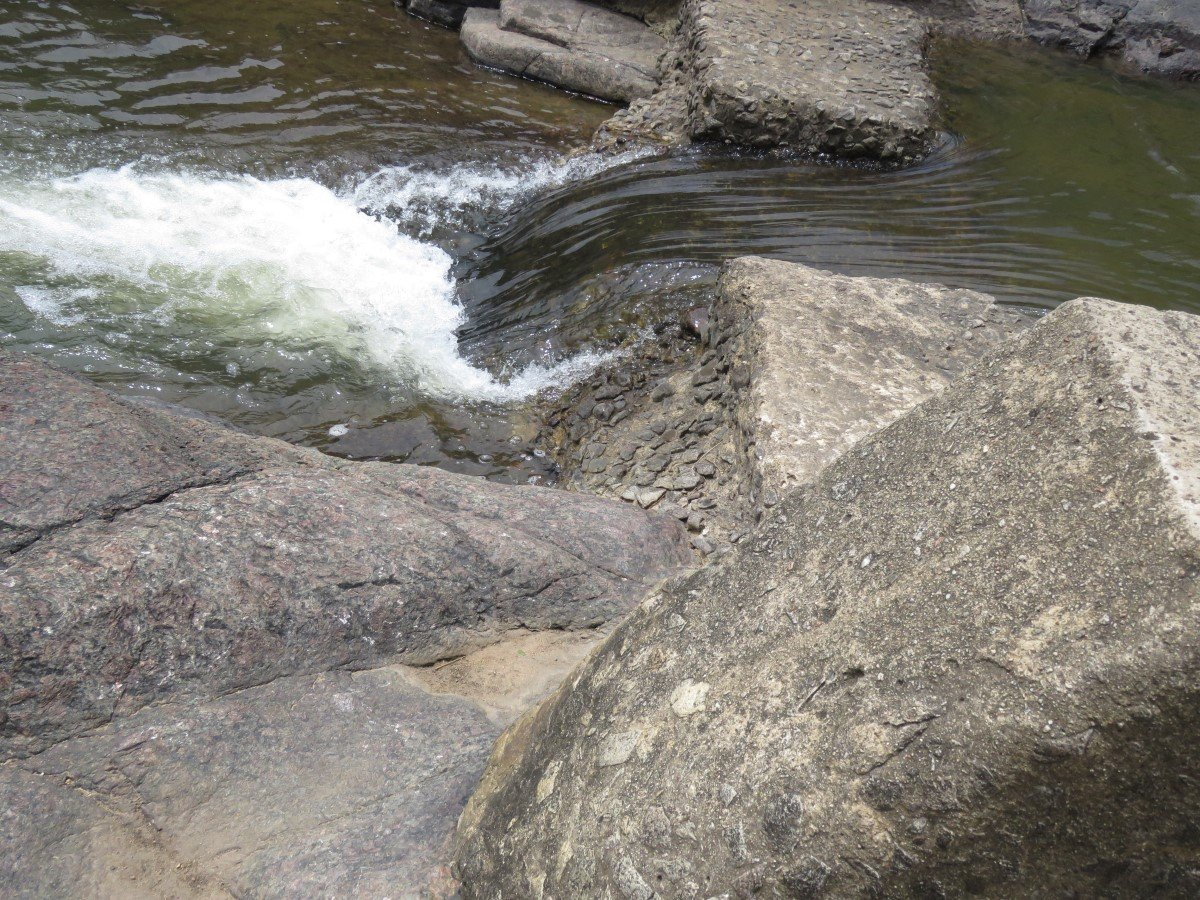
To enter the gorge was a bit confusing and we drove around for many km through the surrounding green sugar cane lands on the plateau.
Eventually we decided to go to the Oribi Hotel and find Wild 5 – a company that runs a few adventure activities in the gorge. We enjoyed a relaxing cup of coffee in the cold garden of the Oribi hotel, observed by cheeky monkeys and parading peacocks. The rest of the morning we spent exploring the gorge, with vertical cliffs and lush forest. A wobbly monkey bridge over a fairly deep (in my opinion) ravine and outlook from a rock sticking out over the valley, raised my heart rate a bit!
Wild 5 has its base at the waterfall for abseiling, swinging and more adventurous activities. Unfortunately it hadn’t rained for a while and the waterfall was dry.
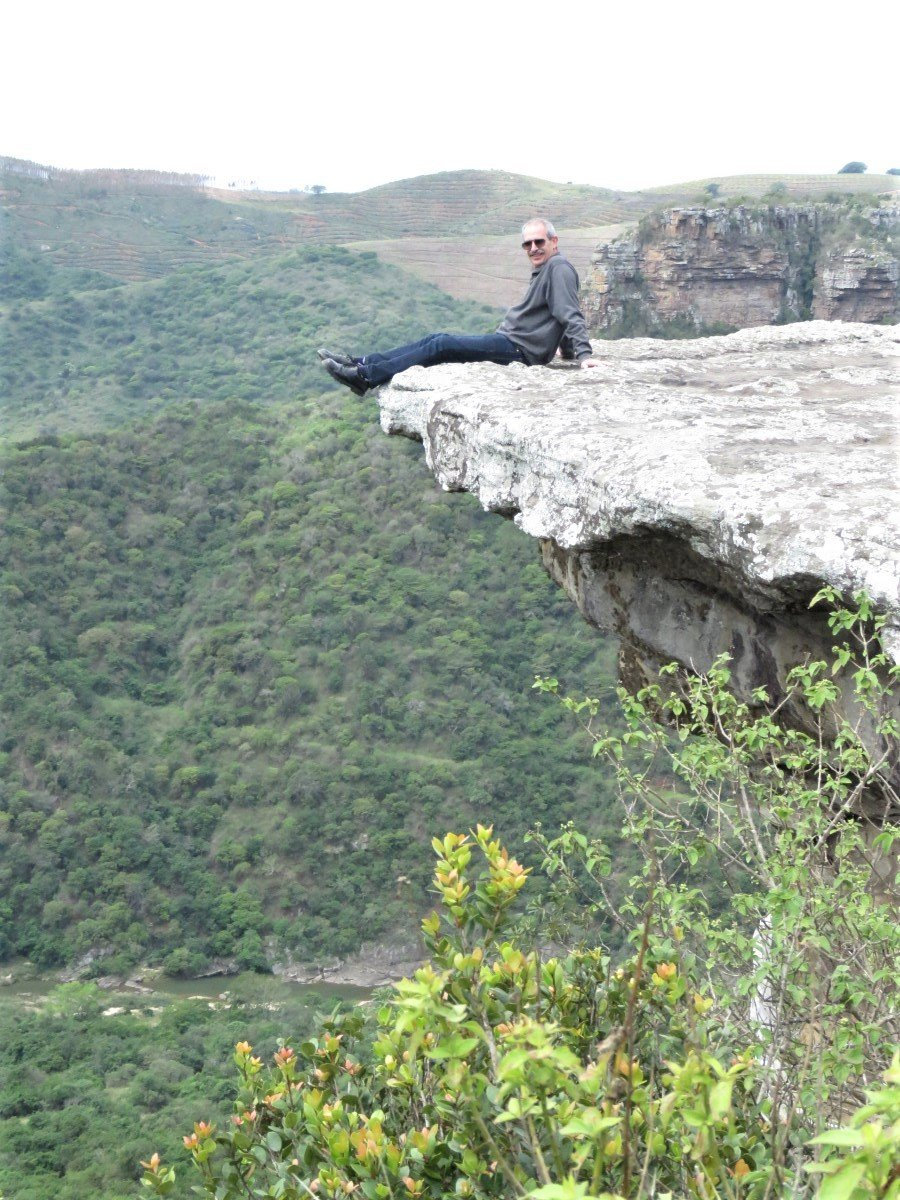
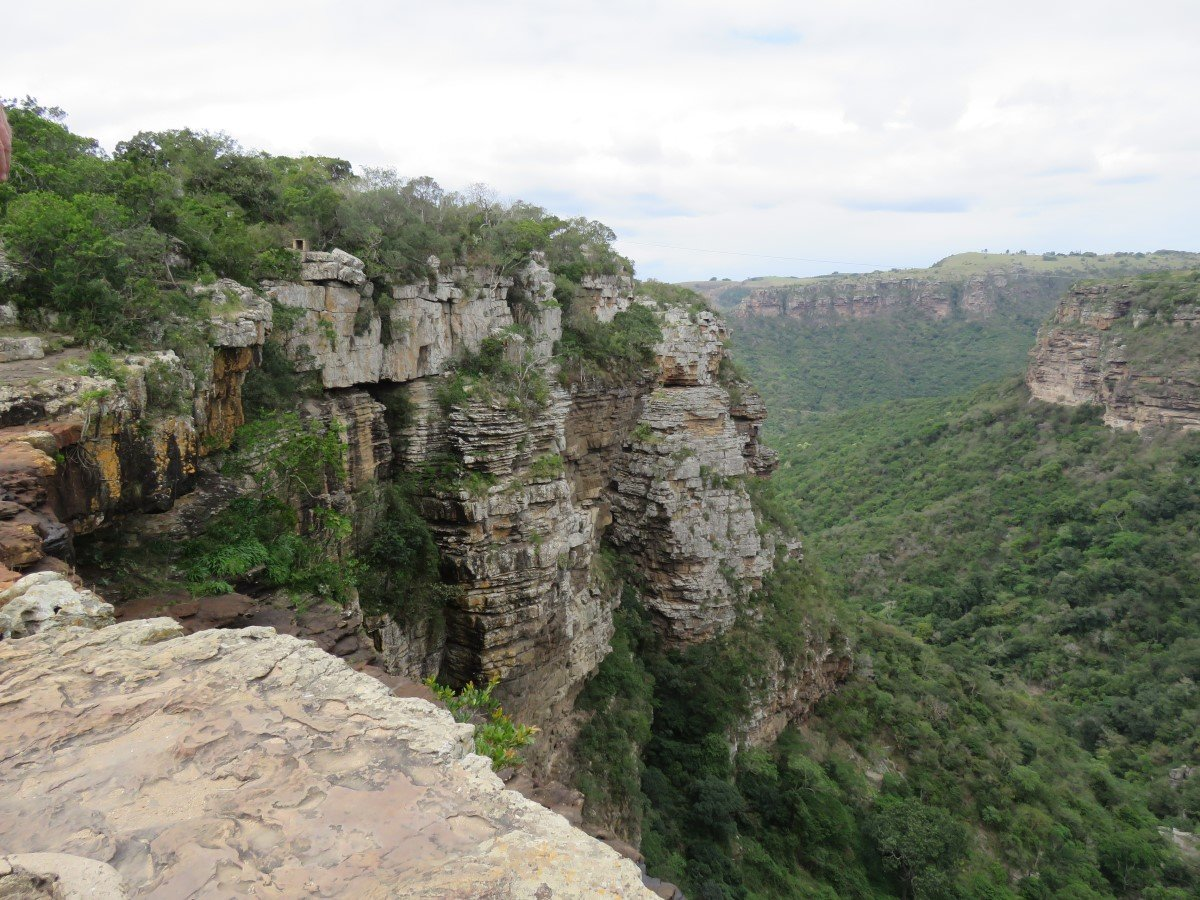
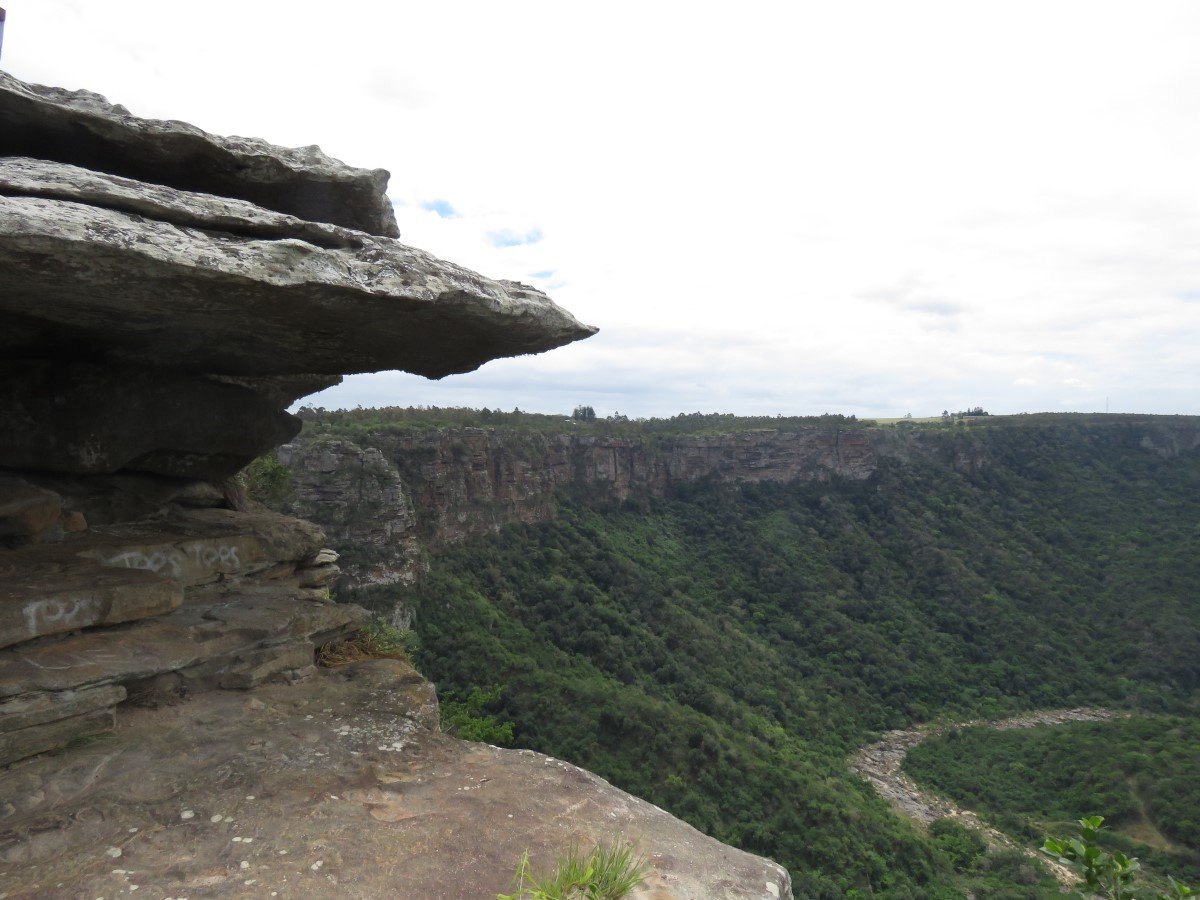
Our time was limited and early afternoon we drove back to Shaka Zulu International Airport to catch our flight back to Johannesburg.
For more photos, clips and videos follow us on
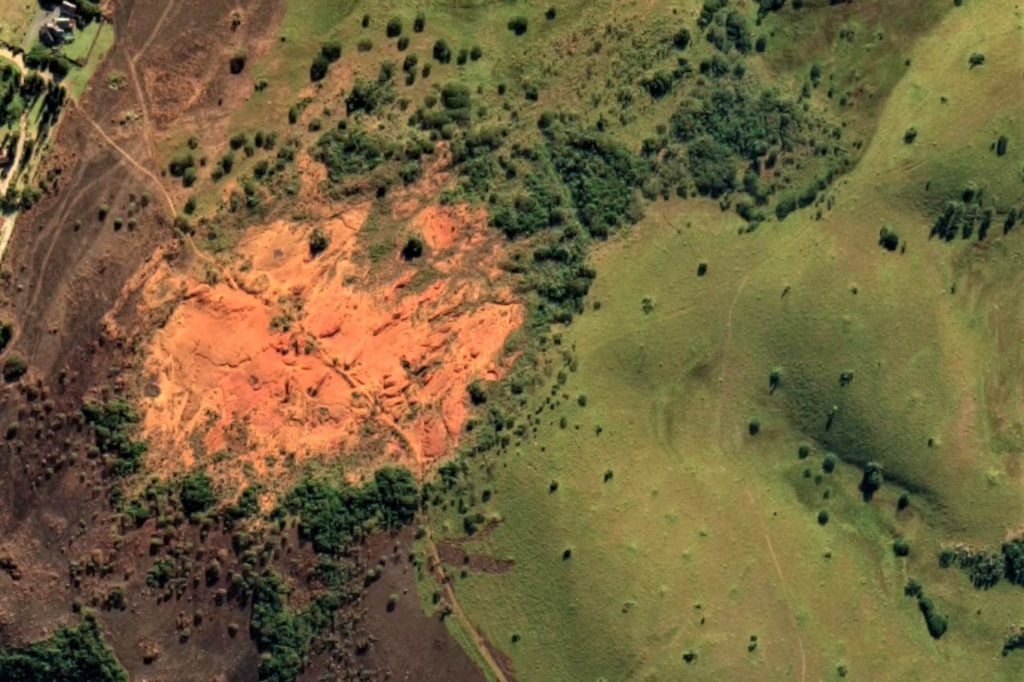
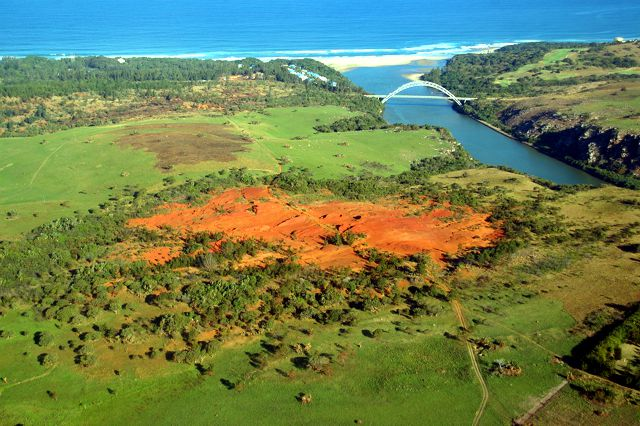
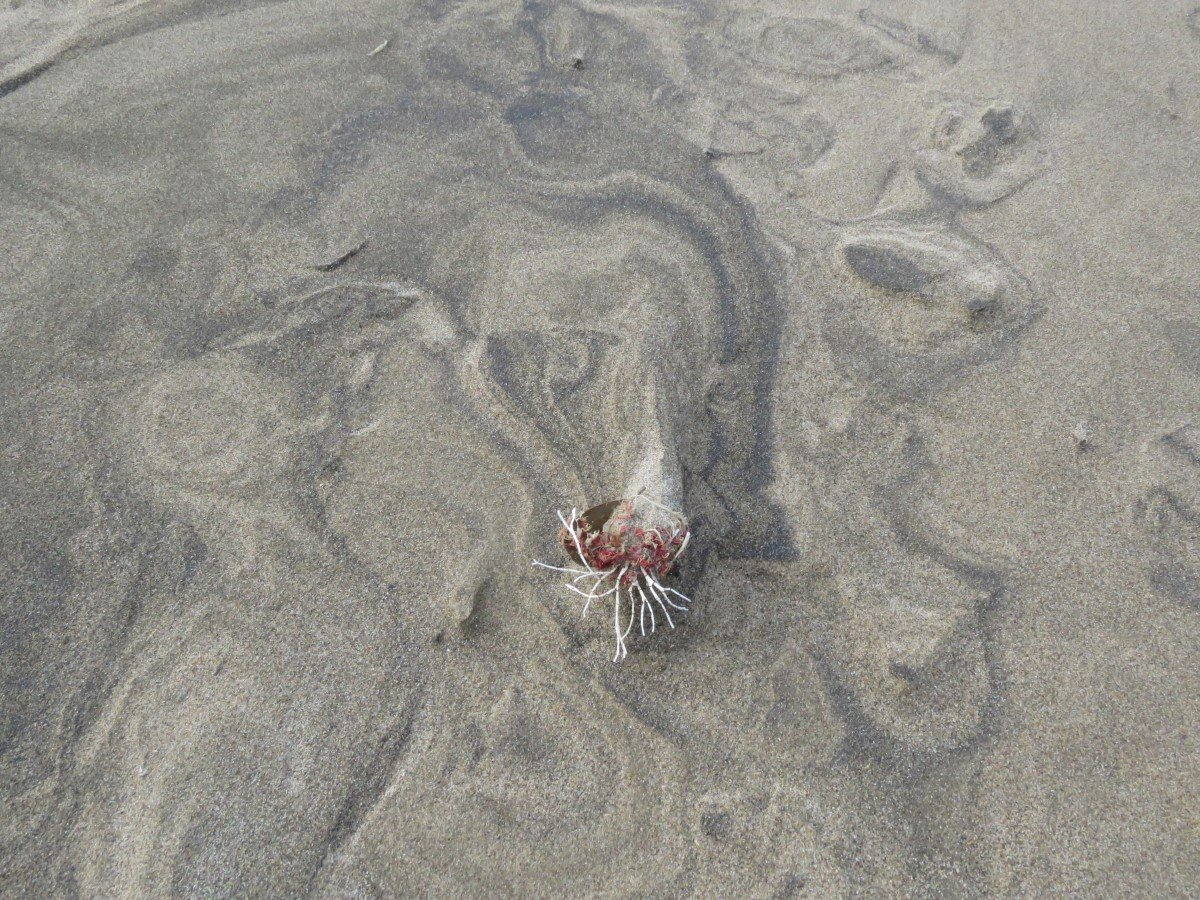
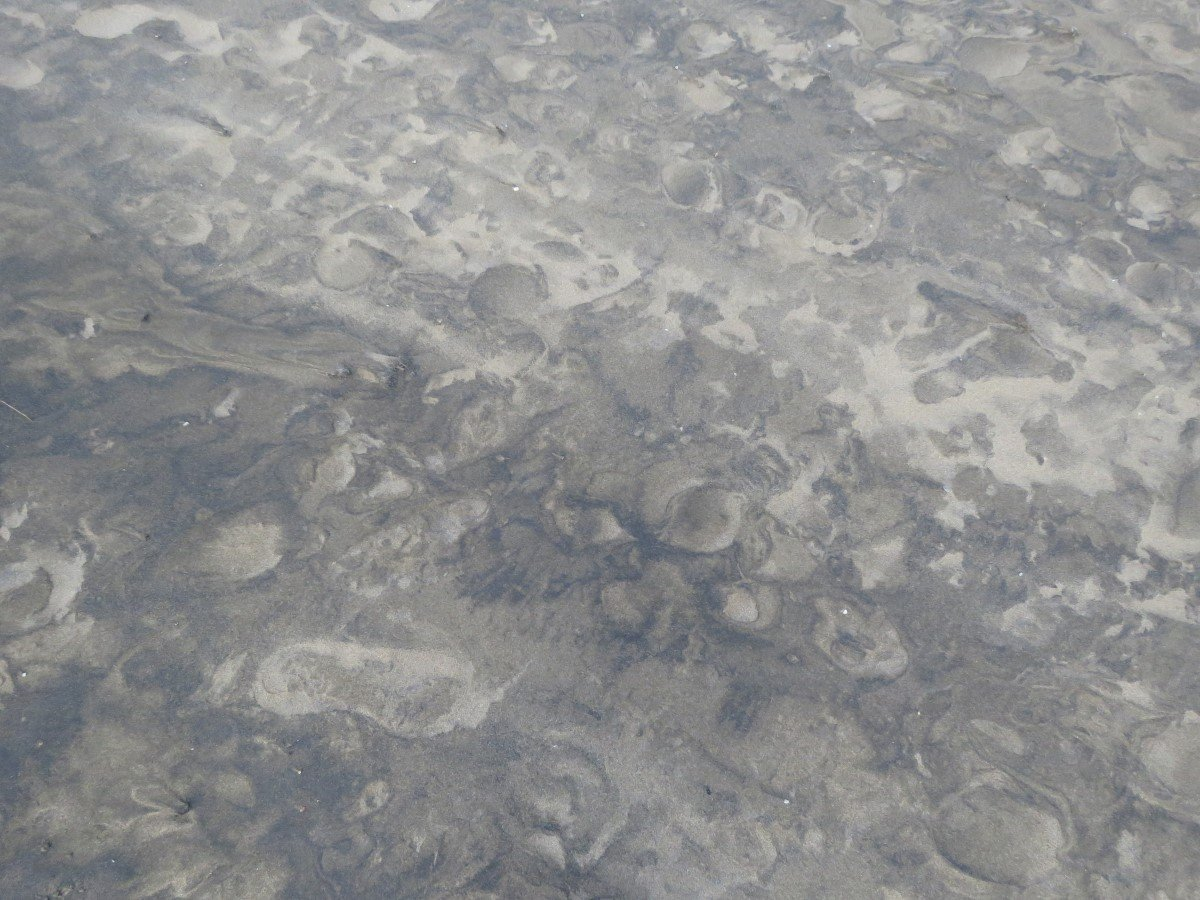
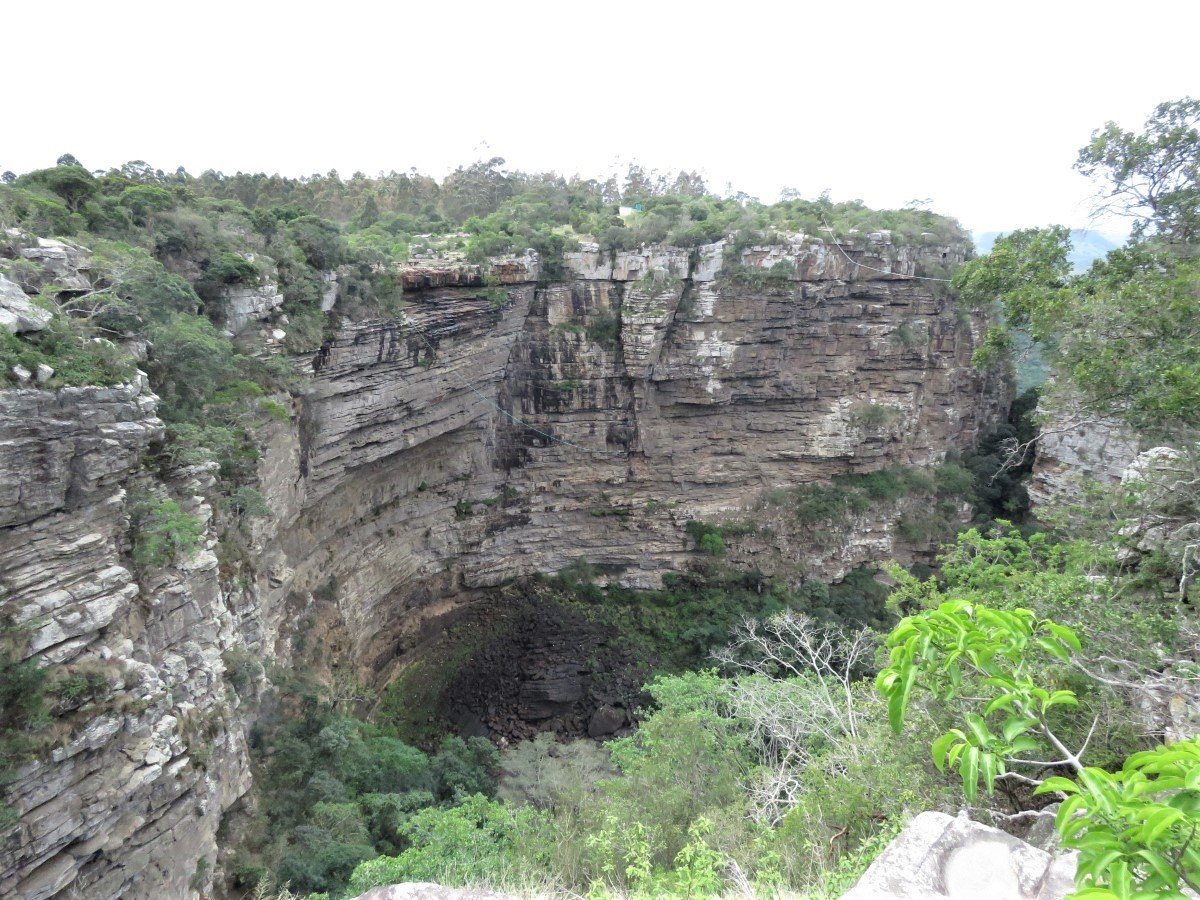
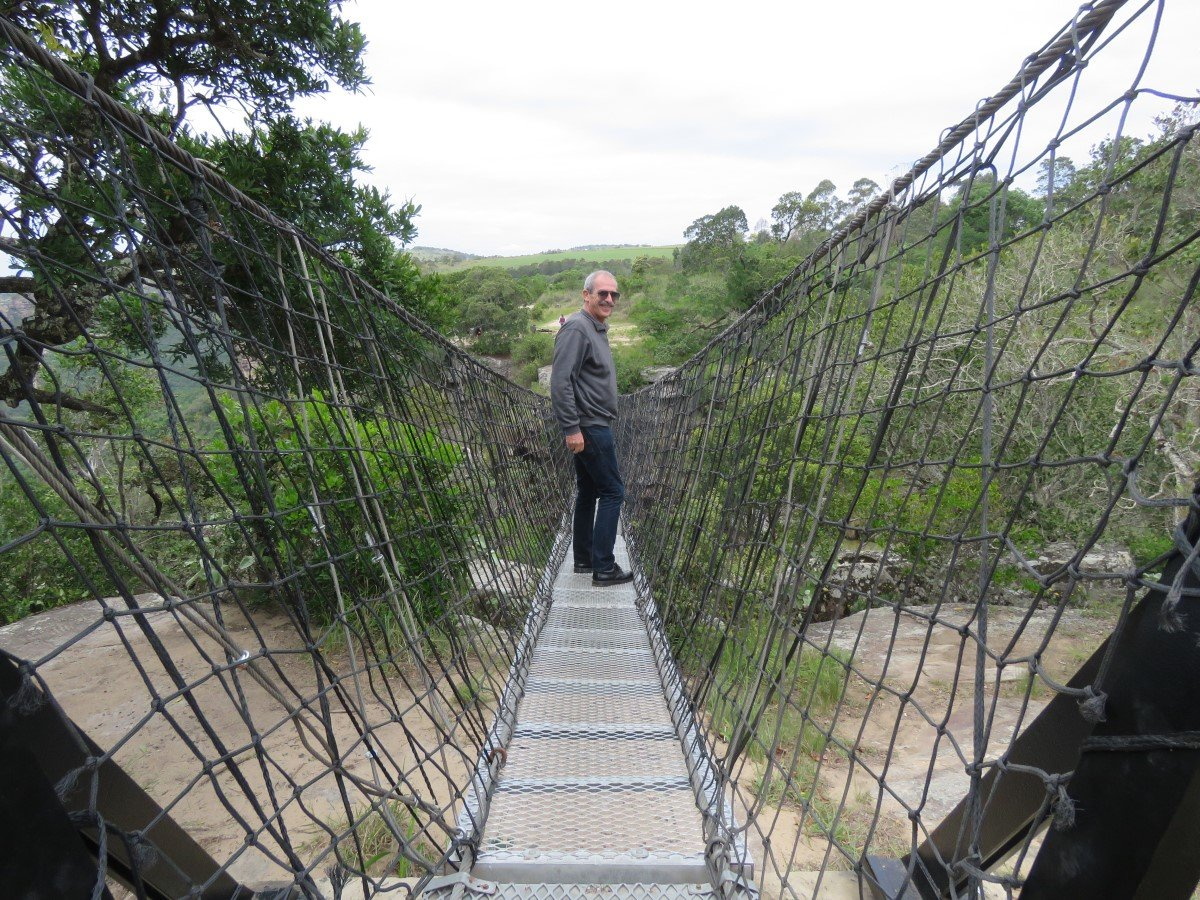


Durban South Coast